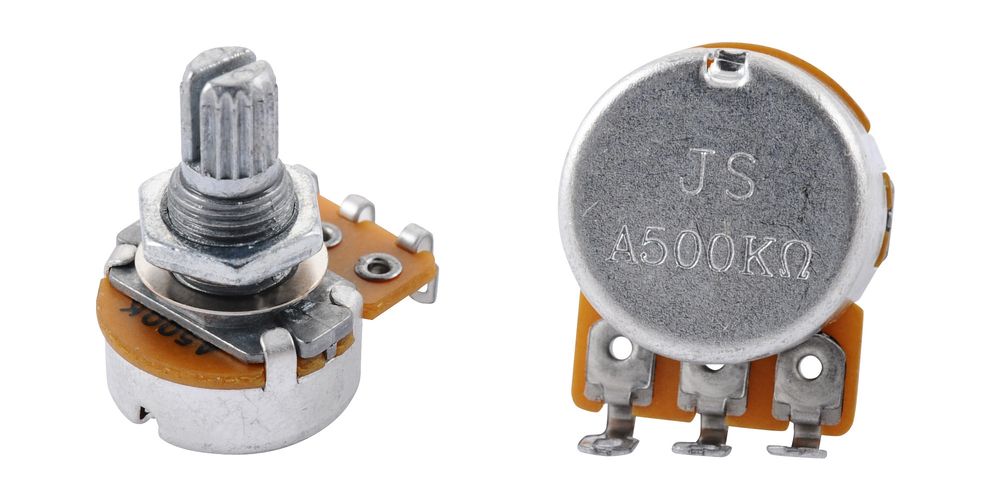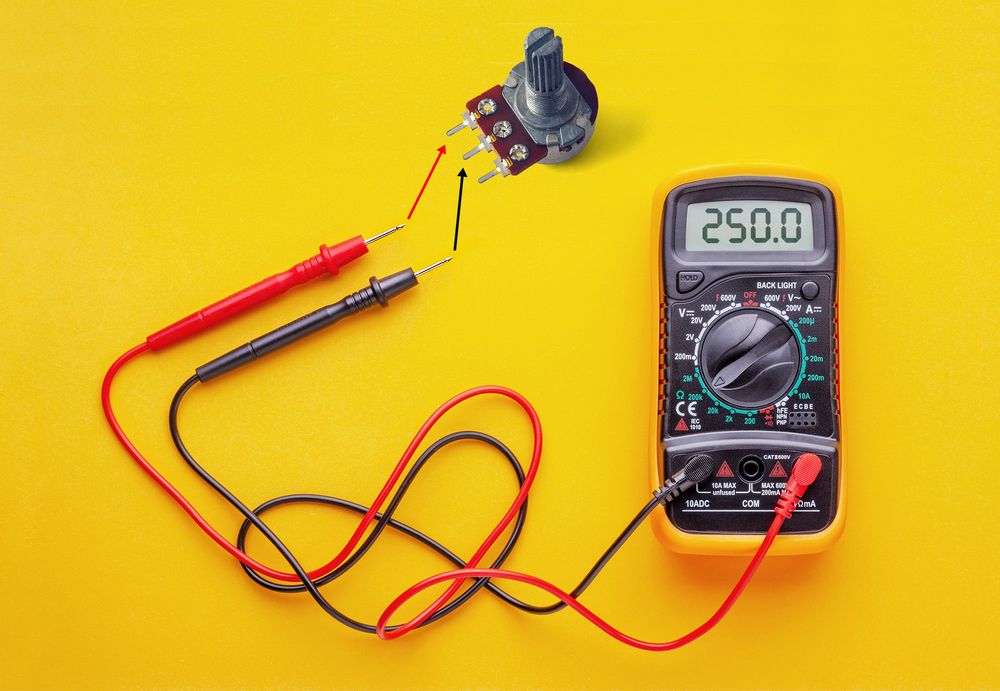7. Designating a potentiometer
You do not always have a measuring device at hand - so what to do if you want to know what kind of potentiometer you have in front of you? Manufacturers offer some help to inquisitive minds by printing or engraving their pots with the most relevant information. In most cases this is done on the lid of the pot's casing.

Harley Benton pot from below
For players, the ID resistance and the characteristic are the only details that really matter, and this is where things start to get tricky! We are clearly dealing with a 250kOhm ID resistance pot, but what about the characteristic?
Unfortunately, there is no universally accepted standard for showing the characteristic. This pot is linear, however, as there are no further designations. LIN is simply left out! On a logarithmic pot, the designation could be 250KLOG, or 250KA (A for audio taper = logarithmic). B would then frequently represent a linear pot, so the designation would be 250B. But there are manufacturers who use these two letters exactly the other way around! And there are many more different variations.
If you want to make absolutely certain, measuring is the only way. To do so, connect the pot as shown below.
Then you take two measurements:
- Determine the maximum resistance (100% rotation). This is then the ID resistance.
- Set the pot to a 50% angle of rotation and measure the resistance again.
If this last measured resistance is significantly lower than 50% of the maximum angle, then you are dealing with a logarithmic pot. If the resistance is significantly larger than 50%, it is a reverse log pot. This is valid for right-handed pots only, of course!




